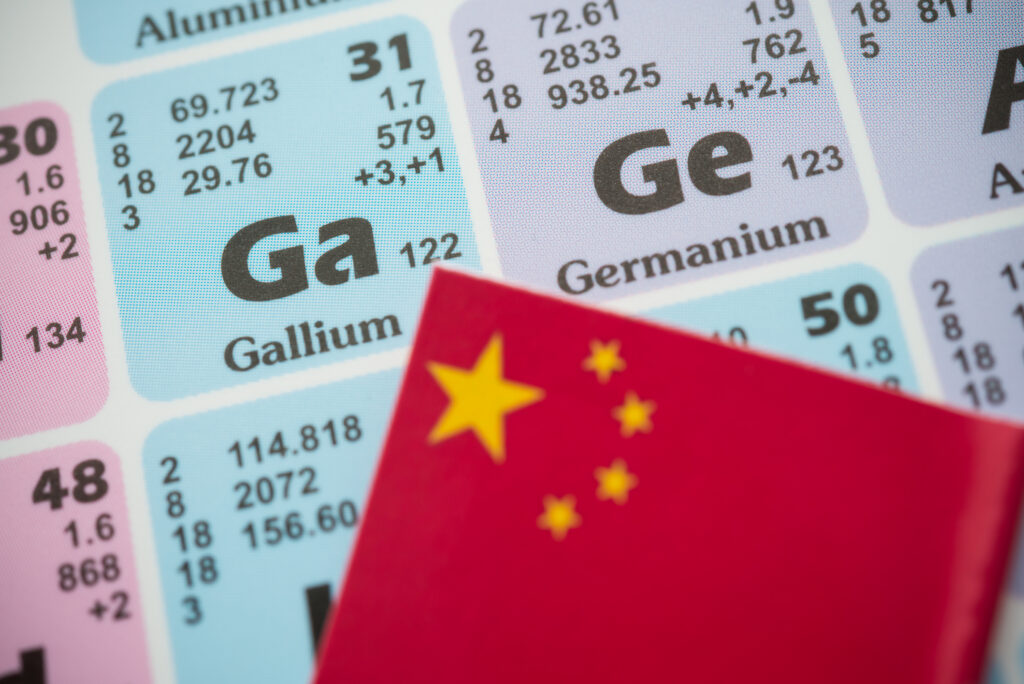Guest Essay by Anthony Watts
“Unprecedented Heat Wave in Pacific Northwest Driven by Climate Change,” the headline in E&E News, WOWT-TV, WorldNewsNetwork, and other media outlets recently, couldn’t possibly be less scientific. With absolutely no analysis, no historical context, and nothing but conjecture, author Anne C. Mulkern, in her article for Scientific American, eschewed science for advocacy in her coverage of the brief Pacific Northwest (PNW) heat wave at the end of June.
If the temperature records hold up to scrutiny and reanalysis, the heat wave did set some all-time high temperature records in Washington, Oregon, and Canada. But consider this: at best, we have about 150 years of reliable weather records for the PNW, so a “black swan” outlier event like this isn’t surprising. It has happened before, most certainly. We just weren’t around to observe it. After all, Native Americans did not keep written weather records.
High (and low) temperature records are nothing new. Data show us more high temperature records were set during the first half of the twentieth century than during the past 50 years. Even the U.S. Environmental Protection Agency (EPA) confirms this.

Many climate activists immediately pointed to “climate change” as the cause of the recent PNW heat wave, even though the heat dome would have been a record weather event with or without the recent modest warming. It is said “climate change,” aka global warming, added about 2 degrees Fahrenheit over the past century. The recent PNW temperature increase far exceeded that.
The temperatures were so high that the small warming of 2°F of climate change was dwarfed. In cities, the “urban heat island effect” (UHI) was also a bigger cause in this case. Portland and Seattle hit supposed all-time highs of 116 and 108 Monday, while Lytton, Canada surged to a national record of 118.
The EPA reports, “… the heat island effect results in daytime temperatures in urban areas about 1-7°F higher than temperatures in outlying areas.”
The UHI effect is well-known and extensively documented. Many weather stations used to calculate climate values have been compromised by the encroachment of urbanization, as I reported in 2009 with the publication of “Is The U.S. Surface Temperature Record Reliable?” and confirmed with an analysis presented in 2015 at the American Geophysical Union convention. When examined, more than 90 percent of the surface stations used by the National Weather Service (NWS) to record surface temperatures and by the National Oceanic and Atmospheric Administration (NOAA) to plot temperature trends violate the NWS’s standards for reliable measurements, with thermometers not being a minimum of 100 feet away from biasing influences such as artificial sources of heat or impervious surfaces such as concrete which absorb heat during the day only to release it slowly at night. These factors bias measured nighttime low temperatures upward, shifting the daily averages up.
The U.S. Climate Reference Network, a network consisting solely of high-quality, unbiased temperature measuring stations, has shown no sustained increase in daily high temperatures in the United States since it was established in 2005.
The previous all-time record high for Portland was 107. Seattle’s all-time high was 103. Medford, Oregon tied its all-time record of 115 degrees on Monday. It didn’t get hotter there than ever before because Medford was south of the center of the high-pressure dome.
The record-high temperatures for Washington and Oregon have yet to be certified, although the media has trumpeted them as fact. Some of the high-temperature records have already proven to be erroneous because of faulty equipment or observation, according to a Tweet from the National Weather Service.
What I find most interesting is when you examine official statewide maximum temperatures since record keeping began in about 1895, only two out of fifty have occurred in the twenty-first century. Most of the high-temperature records across the nation happened in the first half of the twentieth century. According to government records, Oregon’s record high temperature of 119℉ was recorded twice, both times in 1898, more than 120 years of global warming ago. Washington State’s maximum temperature of 118℉ was recorded first in 1928 and tied in 1961, nearly 100 and 50 years of global warming ago, respectively. Forty states’ record high temperatures were set before 1960, with 25 of the record highs being set or tied in the 1930s alone. New high-temperature records have been set in only two states since 2000, meaning more states’ record highs were recorded in the 1890s than in the first two decades of the current century.
Climate alarmists regularly claim we live in the “hottest decade ever.” The records do not support that claim. The Dust Bowl years of the mid-1930s retain the title of hottest decade in recorded history, at a time when carbon dioxide concentrations were approximately 300 parts per million (PPM), far below the approximately 410 PPM today.
It is often said that weather is not climate, which is true. It is particularly true in this case.
The heat wave was entirely a weather pattern issue, not a climate problem. A large high-pressure dome (sometimes called a heat dome) over the PNW is not unheard of, but this one was particularly strong. In fact, it was a result of a perfect storm of weather pattern confluence. Similar unique weather pattern confluences happen each year, causing major blizzards, torrential floods, and tornado outbreaks. That is business as usual for Earth.
High pressure rotates clockwise, causing sinking air, and in the PNW it creates downslope winds, which heat up because the air compresses as it flows down the slope of the Cascade Mountains from east to west towards Portland and Seattle. It is like the infamous Santa Ana winds of Southern California. It’s the same effect as using a bicycle pump to fill a tire. The pump gets warm, not from friction but because the gas (air) is being compressed. Conversely, aerosol cans get colder because gas under pressure is escaping and decompression occurs inside the can. This is known as the Adiabatic process.
Curiously, another record wasn’t trumpeted by the news media. After the heat-dome high pressure moved east, Seattle and Portland saw record rates of cooling. The National Weather Service office in Portland reported a new all-time record cooling.
“Huge cooling Monday evening inland, with temperatures falling from above 100 deg to the 60s/70s. Portland set a new record, with a drop of 52 deg, breaking old record of 48 deg set in Sep 1988. Cooler today, with highs 85 to 93 inland, and 60s on the coast.”

This all-time record cooling didn’t get much press because it goes against the groupthink narrative that “climate change” causes only bad things. Plus, the news media are often fixated on disaster more than good news.
When record heat and record cooling both happen within a 24-hour period, that’s inarguably weather, not climate.
NOAA describes it well, stating, “Weather reflects short-term conditions of the atmosphere while climate is the average daily weather for an extended period of time at a certain location. … Weather can change from minute-to-minute, hour-to-hour, day-to-day, and season-to-season.”
Finally, in a hugely ironic twist, Scientific American, the same outlet that claimed the heat wave was driven by “climate change,” confirms what NOAA and I just told you, in a blog post, titled “Don’t Be Fooled: Weather Is Not Climate.”
You can’t have it both ways.
— Guest essayist Anthony Watts is a senior fellow at The Heartland Institute and the founder and publisher of Watts Up With That, the world’s most-viewed site on global warming and climate change.
SOURCES: Climate Realism; Scientific American; Environmental Protection Agency; National Oceanic and Atmospheric Administration; National Oceanic and Atmospheric Administration; The Heartland Institute; Watts Up With That; Scientific American; Environmental Protection Agency
IN THIS ISSUE …
DOUBLETHINK PROMOTES INTOLERABLY HIGH-COST CLIMATE RESPONSES … TRANSPORTATION ELECTRIFICATION WON’T HELP CLIMATE, WILL HURT THE UNITED STATES
DOUBLETHINK PROMOTES INTOLERABLY HIGH-COST CLIMATE RESPONSES
In a recent Financial Post article, environmentalism analyst Bjorn Lomborg points out climate alarmists are guilty of what author George Orwell called doublethink, the espousing of contradictory claims. In this case, economists say climate change will require a complete overhaul of the global economic system in a very short period of time, which would arguably be “economically crippling,” while “politicians sell net-zero climate schemes as a near-utopia that every nation will rush to embrace.” For example, U.S. climate envoy John Kerry told world leaders gathered at President Joe Biden’s climate summit in April, ‘No one is being asked for a sacrifice.'”
Both claims can’t be true, Lomborg notes.
The Intergovernmental Panel on Climate Change claims if the world takes no steps to reduce greenhouse gas emissions, in 2100 the costs of climate change will be the equivalent of 2.6 percent of global GDP. Although this is undoubtedly a high number, it hardly counts as a catastrophe, and it is far below the cost of programs proposed by the IPCC to reach net zero.
Lomborg reports,
One new peer-reviewed study finds the cost of net-zero just after 2060—much later than most politicians promise—will cost us more than four per cent of GDP by 2040, or about $5 trillion annually. And this assumes globally coordinated carbon taxes. Otherwise, costs will more than double. Paying eight per cent or more to avoid part of 2.6 per cent damages half a century later is just bad economics.
The International Energy Agency recently calculated people around the world will have to sacrifice an enormous amount of energy consumption to reach net zero.
“Despite being richer, the average global person will be allowed less energy than today’s average poor,” Lomborg reports the IEA as saying. “We will all be allowed less energy than the average Albanian used in the 1980s. We will also have to accept shivering in winter at 19°C and sweltering in summer at 26°C, lower highway speeds and fewer people being allowed to fly.”
Lomborg points to another reason politicians’ promises to reach net zero by 2050 are naïve and unrealistic: it would require China to sacrifice seven to 14 percent of its GDP, when in fact that country is going in the other direction, with 247 new coal-fueled power plants currently in various stages of development. Also, to bring themselves out of poverty, most developing countries are following China’s development path, not cutting emissions.
SOURCE: Financial Post; Environmental Research Letters
TRANSPORTATION ELECTRIFICATION WON’T HELP CLIMATE, WILL HURT THE UNITED STATES
In testimony before the U.S. House Select Committee on the Climate Crisis, energy analyst and author Robert Bryce highlights how the push for ever-more green energy, in this case the electrification of transportation through the politically incentivized and subsidized expansion of electric vehicle use, will actually harm the environment, do nothing to prevent climate change, and will hurt the United States.
Bryce testified,
Electrifying parts of our transportation system may result in incremental reductions in greenhouse gas emissions. But a look at history, as well as an analysis of the supply-chain issues involved in manufacturing EVs, the resource intensity of batteries, and the increasingly fragile state of our electric grid—which is being destabilized by bad policy at the state and national levels—shows that a headlong drive to convert our transportation systems to run on “green” electricity could cost taxpayers untold billions of dollars, increase greenhouse gas emissions, be bad for societal resilience, make the U.S. more dependent on commodity markets dominated by China, make us less able to respond to extreme weather events or attacks on our infrastructure, and impose regressive taxes on low- and middle-income Americans in the form of higher electricity prices.
Bryce details how electrifying the transportation system will require an approximately sixfold increase in the use of relatively scarce critical minerals, the supply of which is largely controlled by China, presenting the United States with a serious national security challenge. Also, massive amounts of environmental and human health damage will occur because China and the other countries containing these critical minerals have more relaxed labor and environmental regulations than Western countries. There are also the high environmental costs of disposing of the batteries once they are used up or fail.
Adding more electric vehicles to the highways will exacerbate problems arising from the increasing replacement of baseload reliable coal, natural gas, and nuclear power with increasing amounts of intermittent, weather-dependent power sources such as wind and solar, Bryce testified:
Data published by the Department of Energy’s Office of Cybersecurity, Energy Security, and Emergency Response illustrates the declining reliability of our electric grid. In 2002, there were 23 “major disturbances and unusual occurrences” on the domestic electric grid. Those outages were caused by things like ice storms, fires, vandalism, and severe weather. By 2016, the number of disturbances and unusual occurrences had increased six-fold to 141. In 2020, the number of events jumped to 383—an increase of 270 percent in just four years. Even more alarming: through the first two months of 2021, there have been 122 of these outages.
Most of the outages in recent years have not been due to traditional extreme weather but instead to intermittent supply in the face of normal weather conditions. Electric cars can’t charge if the power is out.
Arguably most outrageous of all is the fact electric vehicles subsidies are a form of welfare for the well-to-do, with poor and middle-income people subsidizing the wealthiest Americans’ purchases of electric vehicles. As Bryce testified, 90 percent of the tax credits given for electric vehicle purchases go to the top quintile income bracket:
EVs … are still, for the most part, luxury cars that are too expensive for low and middle-income consumers. In 2020, a Costco store in Austin was advertising a Chevy Bolt EV with a sticker price of $46,450. As I noted in an article for Real Clear Energy, “For that much cash, consumers could buy a brand new BMW 3 series. Or they could pick up a Mercedes-Benz C-class for less than $39,000. In fact, for the price of a single Chevy Bolt, thrifty shoppers could buy a pair of Toyota Corollas, which sell for about $18,000.”
EVs also impose other societal costs that are likely to exacerbate inequality and lead to more energy poverty. Those costs include taxpayer-funded subsidies given to EV buyers, publicly funded charging stations, and the grid upgrades that will be needed to support the electrification of light and heavy-duty vehicles. Those costs will impose a significant cost burden on low and middle-income consumers, even though those consumers are unlikely to purchase EVs.
As Bryce clearly demonstrates, the government’s push to force a transition from vehicles powered by internal combustion engines to ones run by batteries dependent on an increasingly unreliable power grid has little to recommend it. Electric vehicles are bad for the environment, bad for the relatively poor, and bad for the U.S. economy and national security.






